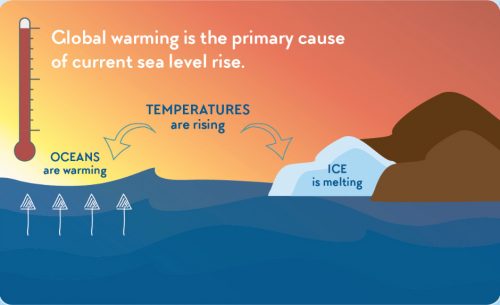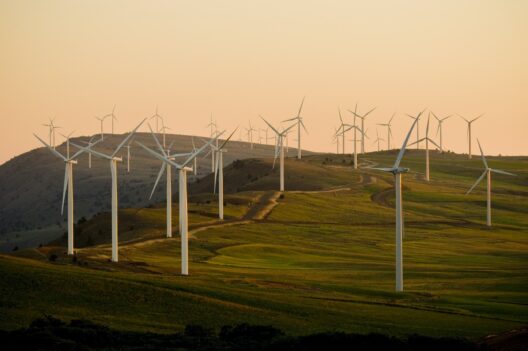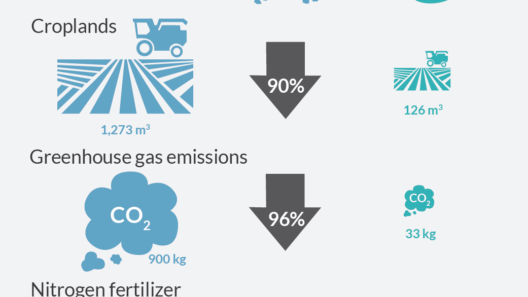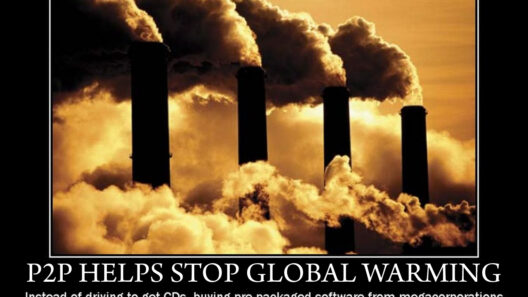Sea levels are rising. But does global warming really cause this phenomenon? Can we grapple with the reality that our coastlines, cherished by many, are slowly disappearing? To answer these profound questions, we must delve into the intricate interplay between climate change and rising sea levels, exploring the mechanisms that contribute to this alarming trend and the resulting impacts on our coastal ecosystems and communities.
First, let’s unpack the science behind rising sea levels. Global warming, primarily driven by increased greenhouse gas emissions, predominantly carbon dioxide, leads to a warming atmosphere. This warming results from our prodigious reliance on fossil fuels, deforestation, and various industrial activities. As the atmosphere heats up, it not only influences weather patterns but also affects ocean temperatures.
When water is heated, it undergoes thermal expansion. This means that as the temperature of the ocean waters rises, the water molecules begin to expand, which, in turn, raises sea levels. Studies demonstrate that thermal expansion is responsible for a significant portion of recent sea-level rise. However, it is just one piece of the puzzle.
Melting ice sheets and glaciers constitute another substantial contributor to rising sea levels. The polar regions, particularly Greenland and Antarctica, harbor colossal ice masses. As temperatures continue to surge, these ice sheets are melting at an unprecedented rate. The freshwater released from melting glaciers flows into the oceans, further exacerbating the phenomenon. This dual threat of thermal expansion and glacial melt creates a compounding effect that accelerates sea-level rise.
However, the implications of rising sea levels extend far beyond just numeric increases on a measuring stick. Coastal areas are witnessing irreversible changes, affecting both ecosystems and human communities alike. Coastal erosion is becoming commonplace as rising waters eat away at shorelines. Many habitats that rely on stable coastlines, such as wetlands and mangroves, are at risk, leading to ecosystem degradation and loss of biodiversity.
Moreover, increased salinity from encroaching seawater threatens freshwater sources. Many coastal communities rely on aquifers for drinking water. When sea levels rise, saltwater intrusion occurs, rendering these sources less viable. A question arises: how will communities reliant on these natural resources adapt to such rapid changes? One potential solution is the exploration and implementation of engineered barriers, such as sea walls or levees. However, such measures come with staggering costs and potential ecological ramifications.
Notably, we must also consider the socio-economic impacts of rising sea levels. In densely populated coastal areas, the threat of flooding is an ever-present reality. Catastrophic flooding events are predicted to increase in frequency and intensity, which could lead to displacement and loss of homes. This phenomenon creates a dilemma — how do we protect communities at risk without exacerbating existing inequalities? Vulnerable populations often lack the resources to relocate or adapt, raising ethical concerns about climate justice.
In response to these challenges, many coastal cities are strategizing on adaptation measures. Some locales are experimenting with nature-based solutions, restoring wetlands and improving drainage systems. Such measures can enhance resilience against rising seas and serve to bolster local biodiversity. Will these approaches yield sufficient results in the face of escalating climate threats?
While adaptation is indeed crucial, we must also confront the underlying cause: climate change itself. Mitigation strategies, such as transitioning to renewable energy sources, enhancing energy efficiency, and advocating for sustainable practices, are indispensable. The overarching question remains, however: can we muster the collective will to actuate transformative change on a global scale? Time is of the essence, as the window for implementing curative actions narrows with each passing year.
The science is clear, yet public discourse continues to be riddled with skepticism. Misinformation persists, complicating efforts to address this pressing global issue. Overcoming this hurdle is paramount. A well-informed public is essential for mobilizing concerted action against rising sea levels and climate change at large.
As we forge ahead, it is vital to foster partnerships between academia, government, and everyday citizens. Collaborative initiatives can amplify resources and knowledge-sharing, driving forward innovative solutions. Will new alliances emerge to tackle this significant challenge? Interdisciplinary approaches that merge science, socio-economics, and local knowledge offer a promising path forward.
It is crucial to remember that rising sea levels do not only threaten coastlines; they symbolize the broader consequences of global warming. Each inch of sea level rise represents a pressing reality, facing us and future generations. To navigate the complexities of this crisis, we must not become disheartened. Instead, let us channel our efforts into collective action and informed decision-making. The coastlines we value can still be preserved, but only if we work together to confront the undeniable truths of climate change. The challenge before us may seem towering, but with resolve and ingenuity, we can embark on the path toward sustainability. The future of our coasts depends on it.






